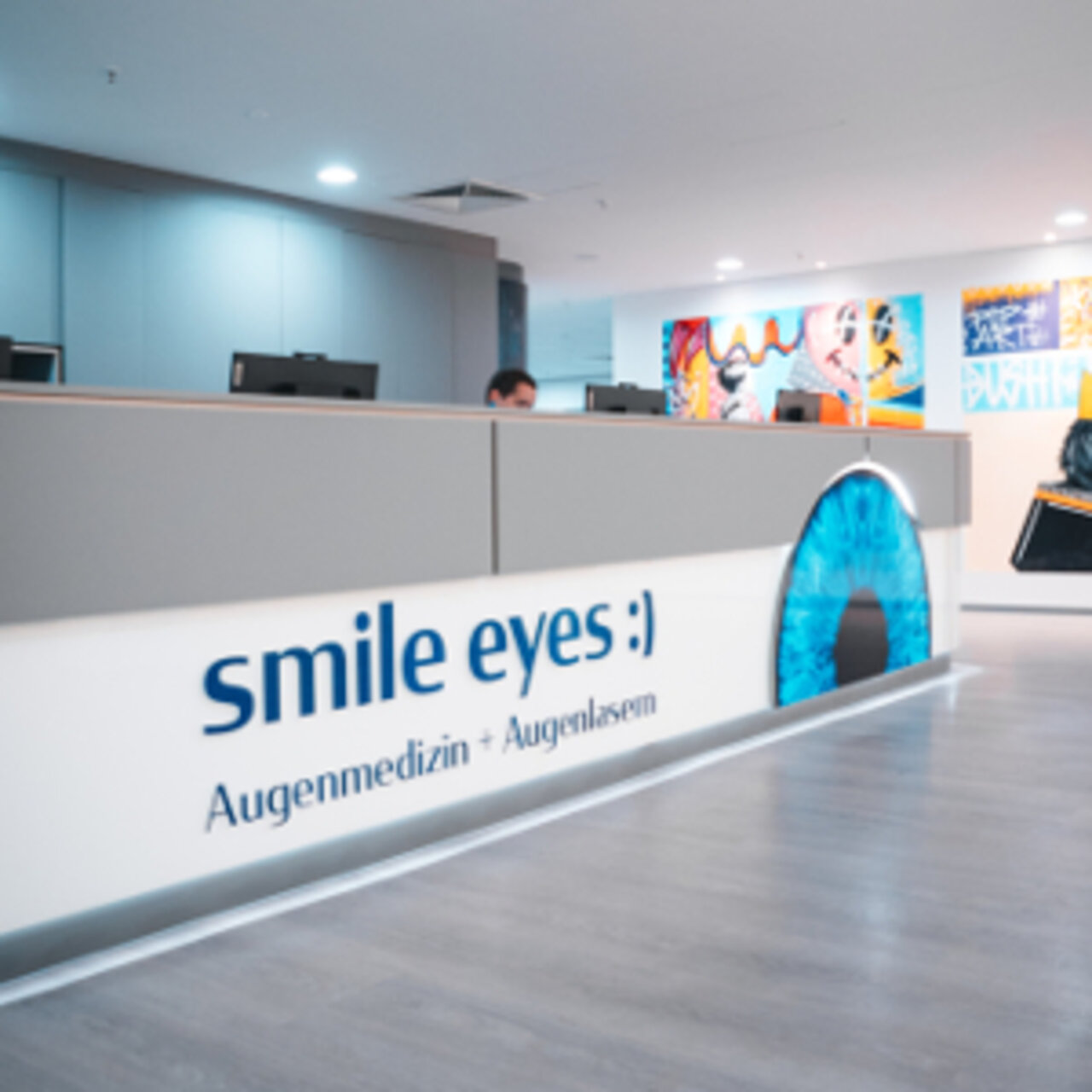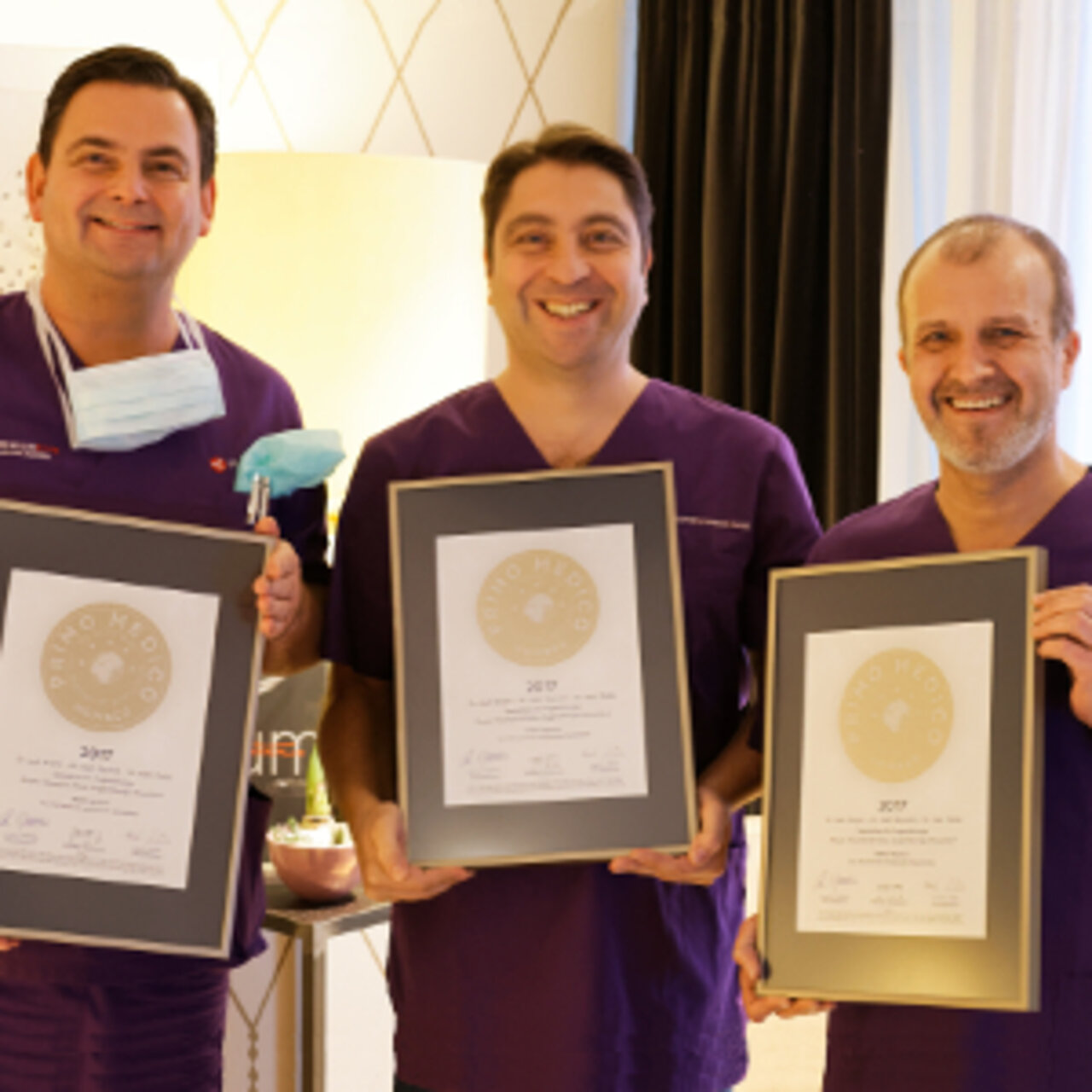Specialists in Presbyopia
7 Specialists found
Information About the Field of Presbyopia
What Is Presbyopia?
Presbyopia is a typical sign of aging. The eye's ability to adjust to close distances decreases with increasing age. Many people notice the onset of presbyopia at about 45 years when reading becomes more strenuous and small letters are harder to see. Previously normal-sighted people then have about +1.0dpt and need their first pair of reading glasses. At the age of 55, they are +2.5dpt. If you are nearsighted or farsighted, the diopters are added. Therefore, short-sighted people often do not need reading glasses. Farsighted people need stronger glasses.
What Can Cause Presbyopia?
To see things sharply at reading distance, the eye must increase its refractive power by curving the lens. The lens of a young person is elastic. It has a rigid nucleus and a soft cortex. The lens is attached to the zonula fibers in the eye. When you fixate on a close object, the ciliary muscles in the eye tighten, causing the zonula fibers to relax. This relaxation causes the previously tightened lens to bulge more and the refractive power to increase. With age, the rigid core of the lens becomes more extensive, and the elasticity of the lens decreases. When fixating near objects, the lens no longer bulges as much. At the age of about 60 years, the lens is rigid.
What Can Be Done for Presbyopia?
People with normal vision can compensate for presbyopia with reading glasses, which are put on whenever good near vision is required.
For people with ametropia, for example, nearsightedness or astigmatism, multifocal glasses are also an option for presbyopia instead of two different pairs of glasses.
Bifocal lenses have two powers: the lower power for near vision, which compensates for presbyopia, and the upper ability for distance vision. Therefore, for reading, you have to look through the lower part of the glasses for distance vision through the upper one.
With full presbyopia, not only near vision is worse, but also vision at medium distances up to two meters. Trifocal lenses have three powers; in addition to one power for near and distance vision, there is also a medium power. Instead of trifocal lenses, progressive lenses are often used today. With these lenses, the strengths merge smoothly, and you can see without "image jump." However, one disadvantage of these lenses is that vision is distorted in the peripheral area.
Multi-focal lenses take some getting used to for the wearer. Since the lower part of the glasses is set for close-up vision, it is possible to see stairs out of focus, for example. Bifocal contact lenses can also be worn instead of glasses.
Can Presbyopia Be Corrected by Laser or Surgery?
Presbyopia can be corrected surgically. This is an option, especially when correcting presbyopia with glasses or contact lenses is challenging. There are different surgical methods. The doctor decides together with the patient which is the most suitable.
Laser treatments of the cornea are suitable if there is myopia, hyperopia, or astigmatism at the same time. In this case, one eye is set to distance vision. The other eye is corrected so that the near vision is optimal. The principle is called monovision. The brain can block out the out-of-focus image so that a sharp image is always produced. However, the quality of perception is not the same as when seeing with "two eyes." Depth perception and spatial vision may be limited. Therefore, the difference between the diopters should not be too significant.
The Refractive Surgery Commission of the German Ophthalmological Society and the Professional Association of Ophthalmologists of Germany recommends the following methods:
Surface treatments, e.g., PRK (photorefractive keratotomy), Trans-PRK, or LASEK, are suitable in case of simultaneous myopia or astigmatism. In surface treatments, the doctor uses the excimer laser to ablate the cornea superficially. In this way, the cornea's curvature is changed and compensates for the defective vision. A contact lens is temporarily inserted, under which the superficial wound heals in a few days.
LASIK (laser in situ keratomileuses) and Femto-LASIK can be used for simultaneous nearsightedness, farsightedness, or astigmatism. A 0.1- to 0.15-millimeter-thick layer in LASIK is partially separated from the cornea using a microkeratome, a sophisticated micro scalpel, and folded over. The surgeon removes the cornea using the excimer laser to change the curvature. The surgeon then places the folded corneal layer back over it. The corneal layer grows on its own. Femto-LASIK is a newer form of LASIK. Here, the microkeratome is replaced by the femtosecond laser.
Refractive lenticule extraction (RELEX) using a femtosecond laser is recommended for concomitant myopia or astigmatism. In this method, only the femtosecond laser is used. In RELEX FLEX, a tissue slice is created by a double incision with the femtosecond laser. The physician lifts the upper corneal flap, removes the tissue slice, and folds the flap back. It grows back on its own. With the RELEX SMILE, the doctor removes the tissue flap through two side openings without folding up the flap.
In addition to laser treatments of the cornea, there is also the option of exchanging the eye lens for an artificial lens (RLA - refractive lens exchange). This method is recommended in case of simultaneous nearsightedness or farsightedness. To swap the lens, the doctor opens the cornea at the edge with a small incision. The lens is crushed with a laser, and the fragments are removed. The artificial lens is inserted into the empty capsular bag of the eye lens. The corneal incision heals by itself. When using a monofocal artificial lens, additional reading glasses are necessary. With a multifocal artificial lens, it is usually possible to do without glasses. Lens exchange is particularly suitable for presbyopia and cataract. Then the cloudy lens of the eye is replaced by an artificial lens. In normal-sighted people, RLA is recommended for the correction of presbyopia only to a limited extent.
Another option for correcting presbyopia is the implantation of a corneal implant. The surgery is carried out in one eye only. The doctor places a corneal implant in a pocket in the cornea, thus changing the refractive power of one eye and compensating for presbyopia.
How Much Does a Presbyopia Surgery Cost?
Laser surgery is not covered by health insurance. Depending on the method and clinic, prices range from 800 to 2500 euros per eye. LASEK or PRK is offered from 800 euros. LASIK or Femto-LASIK is somewhat more expensive. The most costly is RELEX SMILE. Here 1600 to 2500 euros per eye has to be expected. Lens replacement costs at least 2500 euros per eye for monofocal lenses and at least 3000 euros for multifocal lenses.
What Are the Risks?
After surface treatments, scars can form on the cornea. Patients often suffer temporarily from increased dryness of the eyes. Twilight vision may also be impaired: Patients see light rings around illuminated sources (halos) and shadow images.
With LASIK, Femto-LASIK, or RELEX, patients may experience dry eyes and worsened vision at dusk, just as with surface treatment. Very rarely, corneal cutting errors, detachment of the top layer (epithelium) of the cornea, wrinkling of the anterior corneal lamella during wound healing (LASIK and Femto-LASIK), irregular cut surfaces (RELEX), incomplete removal of the tissue disc (RELEX), weakening and protrusion of the cornea, inflammation, infection, or severe scarring occur.
When replacing the lens with an artificial lens (RLA), infection with blindness can occur after surgery in sporadic cases. In the case of myopia, the risk of retinal detachment increases. Twilight vision may worsen with multifocal artificial lenses. Patients may see light rings around luminous sources (halos) or be sensitive to glare.
Twilight vision may also worsen with corneal implants. Some implants have a darker tint that is especially visible with a light iris. Temporarily, patients often have dry eyes. Extremely rarely, infections with scarring and deterioration of vision occur.
What Is the Healing Process and Prognosis After Surgery?
After surface treatments, the eye stings and tears for the first one to two days after surgery, and pain is more significant than in other laser methods because the corneal nerves are exposed until epithelium forms over the defect. A bandage lens is used for two to three days to protect the cornea. During the first week, vision is usually limited.
In LASIK, Femto-LASIK, and REFLEX SMILE, the eye tends to water and burn in the first few hours after surgery, and patients have blurred vision. The next day, however, the vision is already significantly better.
In the first few weeks, vision may deteriorate slightly with all methods, as the pit in the cornea partially fills with corneal epithelium. After about six weeks, the final vision is usually achieved. Another surgery may become necessary if the vision has changed too much.
When the lens is replaced with an artificial lens, the healing process is usually quick, and good vision is achieved soon after surgery. Months or years after surgery, cloudiness may develop behind the artificial lens. This is called a posterior cataract. The posterior cataract can be treated with a laser without the doctor having to reopen the eye.
Which Doctors and Centers are Specialists in Presbyopia Surgery?
Surgical correction of presbyopia is best performed in an eye clinic specializing in laser eye surgery. The modern procedures of refractive surgery now have a high level of quality. The specialized ophthalmologist examines the eye comprehensively, informs the patient, and recommends a suitable method depending on the degree of refractive error.
We will help you find an expert for your condition. All listed doctors and clinics have been checked by us for their outstanding specialization in presbyopia and are awaiting your inquiry or treatment request.
Source reference
- Grehn, F. (2012). Augenheilkunde. 31. überarbeitete Auflage, Springer Verlag
- Kommission Refraktive Chirurgie der Deutschen Ophtalmologischen Gesellschaft und des Berufsverbands der Augenärzte Deutschlands e.V. (2019). Bewertung und Qualitätssicherung refraktiv-chirurgischer Eingriffe durch die DOG und den BVA – KRC- Empfehlungen.
- Berufsverband der Augenärzte Deutschlands e.V. Alterssichtigkeit (Presbyopie). Link: augeninfo.de/cms/hauptmenu/augenheilkunde/fehlsichtigkeit/alterssichtigkeit-presbyopie.htmlbyopie (9.9.2021)






